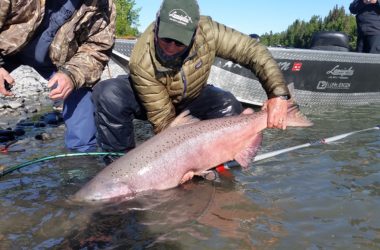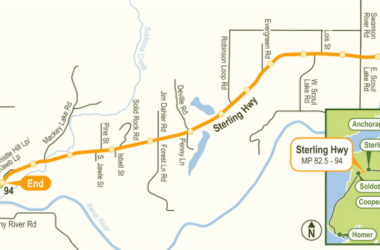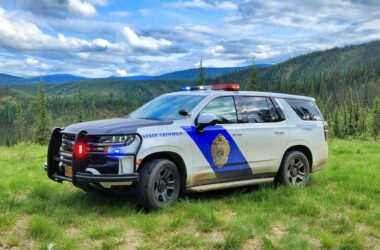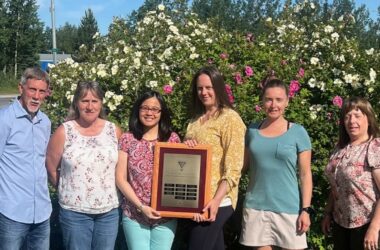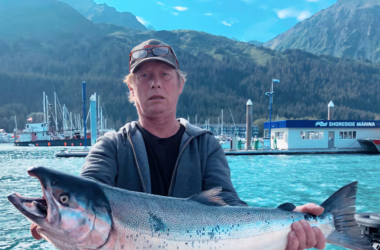May 7, 2024 (Fairbanks)—In an ongoing collaborative effort between Canada and Alaska, an additional 40 wood bison from Elk Island National Park in Alberta, Canada, recently arrived in Alaska. This transfer will help restore wood bison to its historical range in Alaska and ensure the survival of this iconic species by establishing separate herds on the wild landscape.
The yearling bison were transported by truck and arrived in Fairbanks on April 19. They are healthy and are settling into their new temporary home at the University of Alaska Fairbanks Large Animal Research Station (LARS). Ten wood bison from a 2022 import were already at LARS, and these older bison immediately began interacting with the new bison. Bison are very social, so these interactions indicate that they are quickly adjusting.
The wood bison currently at LARS and some of the bison at Alaska Wildlife Conservation Center (AWCC) are expected to be transported to the Minto Flats State Game Refuge in July and August of this year. They will be held there in an enclosure for the winter and released around green-up in the spring of 2025. The Minto Flats Refuge is well suited for bison because of its vast wet sedge meadows, the preferred winter food of wood bison, and winter wind and relatively low snowfall that keeps the forage accessible throughout the winter.
“It’s been a really long process,” said Wood Bison Restoration Project Biologist Tom Seaton. “In the early 1990s, Alaska kind of joined forces with [Canada] to try to restore them to places within their former range and in Alaska.”
Seaton said the process’s success has been up and down, with some herds thriving and others struggling, but in general, more successful than not.
“There are six populations now in Alaska and the Yukon Territory of bison that have been released–some of them are plains bison, some of them are wood bison, but they’re all kind of living within the original range of wood bison. Some of those populations perform really well, like the population at Delta Junction, and the population just inside the Yukon territory between White Horse and the Border is a really amazing performer, too. The population around Farewell south of McGrath also performed really well, but some of them don’t like the Chitina population in the Copper River Basin still performs somewhat, but it’s not super productive like those other populations.”
“It’s with tremendous gratitude that we accept these animals from Canada,” said Alaska Department of Fish and Game Commissioner Doug Vincent-Lang. “We also accept the responsibility that comes with them and are thrilled to be a part of the ongoing efforts to ensure the survival of this iconic North American species. The actions we collaboratively take today are not just for conservation; one day, they will be seen as our part of a larger history.”
“The Government of Canada has made lasting contributions to bison conservation for over a century. Their survival and rescue from near extinction is an important conservation success story in Canada,” stated the Honorable Steven Guilbeault, Minister of Environment and Climate Change and minister responsible for Parks Canada. “The collaboration with the State of Alaska results from years of scientific and cultural cooperation and international conservation leadership. In working together, Parks Canada and the State of Alaska contribute to the restoration and long-term survival of wood bison.”
These bison will be the second wild wood bison herd in the United States. After several decades of work, a herd of wood bison was introduced to the Innoko River area of the Lower Yukon River in 2015. Those wood bison also came from Elk Island National Park and are the source of the wood bison already in Alaska at LARS and AWCC.
Wood bison are the largest wild herbivores and the largest living native land mammal in the Western Hemisphere. Wood bison once lived in parts of Alaska, but the last ones were shot in the early 1900s. Bison are the national mammal of the United States and, as a keystone species, play a key role in ecosystems.
Supported by the work of Elk Island National Park, Canada and Alaska are contributing to the global survival and restoration of an iconic and majestic animal and pledge to continue these efforts in the future

